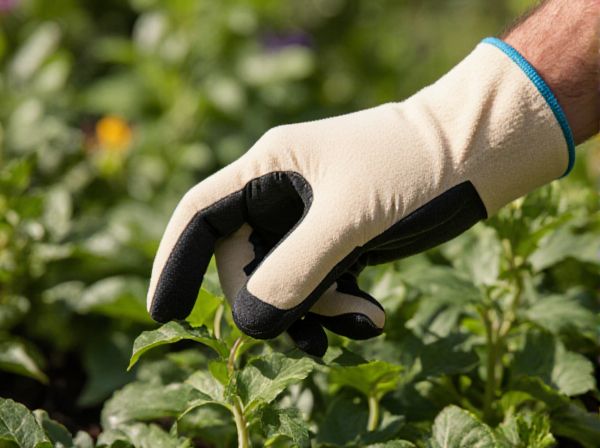
Handpicking vs Spraying Illustration
Handpicking pests offers a chemical-free approach, allowing for targeted removal of individual insects without harming beneficial organisms or the environment. Spraying provides a faster, more comprehensive solution for large infestations but carries risks of chemical exposure and potential resistance development. Balancing these methods depends on pest severity, crop type, and ecological considerations.
Table of Comparison
| Aspect | Handpicking | Spraying |
|---|---|---|
| Method | Manual removal of pests | Application of chemical or biological pesticides |
| Effectiveness | Selective, ideal for small infestations | Broad-spectrum, effective for large infestations |
| Environmental Impact | Eco-friendly, no chemical residues | Potentially toxic, risk of environmental contamination |
| Cost | Low cost but labor-intensive | Moderate to high cost depending on chemicals used |
| Time | Time-consuming | Quick application |
| Safety | Safe for humans and beneficial insects | Requires protective gear; harmful if misused |
Introduction to Garden Pest Control Methods
Handpicking and spraying represent two primary garden pest control methods targeting insect populations. Handpicking involves manually removing pests like caterpillars and beetles from plants, offering a chemical-free solution ideal for small gardens. Spraying employs insecticides or organic solutions such as neem oil, providing efficient pest management for larger areas but requiring careful application to minimize environmental impact.
Understanding Handpicking: How It Works
Handpicking is a pest control method that involves manually removing pests from plants, targeting insects like caterpillars, beetles, and aphids directly. This technique is effective for small gardens or localized infestations, allowing precise removal without the use of chemicals. Handpicking minimizes environmental impact, preserves beneficial insects, and is a sustainable approach in integrated pest management strategies.
The Science Behind Chemical Spraying
Chemical spraying targets pests by dispersing pesticides that interfere with their nervous systems or reproductive cycles, ensuring rapid population control. The active compounds in sprays penetrate insect exoskeletons or plant surfaces, disrupting cellular functions and causing mortality. Compared to handpicking, which physically removes pests, chemical spraying provides broader coverage and can prevent pest resistance through formulated biocides.
Effectiveness: Handpicking vs Spraying
Handpicking pests offers targeted removal, minimizing chemical exposure and preserving beneficial insects, making it effective for small infestations or specific pests like caterpillars and beetles. Spraying pesticides delivers broad-spectrum control suitable for large infestations but risks harming beneficial organisms and may contribute to pesticide resistance. Effectiveness depends on infestation size, pest type, and environmental impact considerations, with integrated pest management often combining both methods.
Environmental Impact Comparison
Handpicking pests reduces environmental harm by avoiding chemical runoff and preserving beneficial insect populations, making it a sustainable pest control method. Spraying pesticides often leads to soil and water contamination, negatively affecting biodiversity and ecosystem health. Choosing handpicking minimizes ecological disruption while maintaining effective pest management.
Safety Considerations for Gardeners
Handpicking pests minimizes chemical exposure, providing a safer option for gardeners, especially those with children or pets. Spraying pesticides can pose risks due to inhalation or skin contact with harmful substances, requiring protective gear and careful handling. Opting for physical removal like handpicking supports organic gardening practices and reduces environmental contamination.
Cost and Accessibility of Each Method
Handpicking pests requires minimal upfront costs and is accessible for gardeners and small-scale farmers but can be labor-intensive and time-consuming. Spraying involves purchasing chemicals or organic sprays, which can incur higher costs depending on the product, yet allows for quicker treatment of large areas. Accessibility to handpicking depends mainly on physical availability and pest visibility, while spraying requires appropriate equipment and safety measures.
Impact on Beneficial Insects and Pollinators
Handpicking pests targets specific harmful insects, preserving beneficial insects and pollinators essential for crop health and ecosystem balance. Spraying broad-spectrum pesticides often kills non-target beneficial insects, disrupting pollination and natural pest control. Selecting handpicking methods minimizes ecological damage and supports sustainable pest management practices.
Best Practices for Integrated Pest Management
Handpicking pests ensures targeted removal of harmful insects, minimizing environmental impact and preserving beneficial species in Integrated Pest Management (IPM). Spraying with selective insecticides should be used cautiously, following exact timing and dosage to avoid resistance and non-target damage. Combining thorough monitoring with handpicking and strategic, minimal spraying optimizes pest control efficiency and sustainability in IPM programs.
Choosing the Right Approach for Your Garden
Handpicking pests offers an eco-friendly, chemical-free method ideal for small gardens or early infestations, allowing precise removal of harmful insects like aphids and caterpillars. Spraying, using targeted insecticides or organic solutions such as neem oil, suits larger infestations by efficiently covering broad areas and controlling a variety of pests including beetles and mites. Selecting the right approach depends on garden size, pest type, and the environmental impact, ensuring effective pest management while preserving beneficial insects and plant health.
Handpicking vs Spraying Infographic

 gardendif.com
gardendif.com